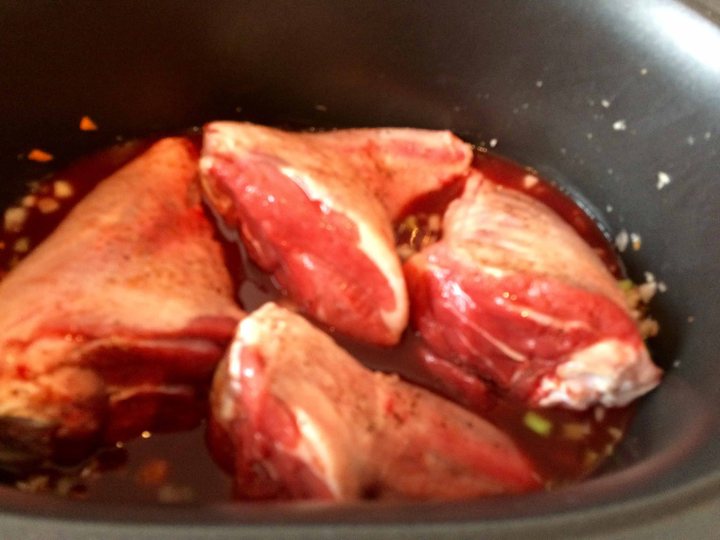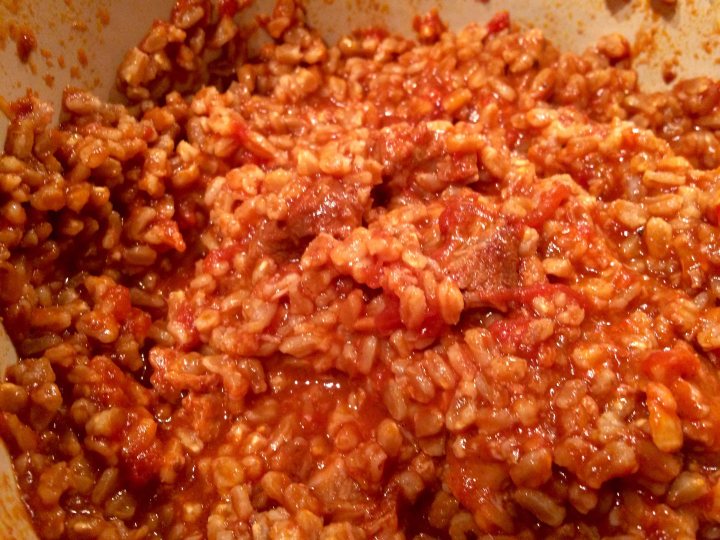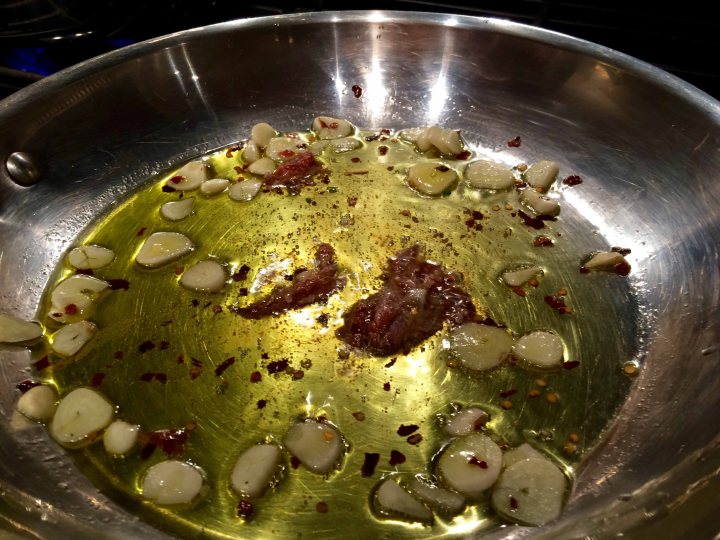Sometimes what I choose to prepare for dinner is determined by finding something in the fridge that needs to be used up. Such was the case yesterday when I found a week-old container of mirepoix (diced onions, carrots, and celery). I considered several options, including a bean soup and pasta sauce, but then I thought why not something braised, cooked low and slow. After checking a few cookbooks for recipes, I finally settled upon one I found in Michele Scicolone’s The Italian Slow Cooker: “Lamb Shanks with White Bean and Gremolata.” My only concern was being able to find the lamb shanks early on Sunday morning. Fortunately, I was able to grab the last four shanks available at my local market.
They were from Icelandic lamb, which I discovered is a seasonal special that ’s available at Whole Foods from late September to October. They met the recipe’s size requirements (small, about 1 pound each) and were surprisingly lean. This was my first encounter with this variety of lamb and I’m happy to report that it was rich in flavor and not as gamey as some other varieties, which I believe contributed to the success of the dish. There was a prefect balance of flavors among the meat, the vegetables, beans, braising liquid, and the bright gremolata (a mix of minced garlic, lemon zest, and parsley.)
I think the next time I prepare this dish, I’ll brown the shanks before slow cooking them to develop their flavor a little more. However, even without this step, the lamb was delicious.
Lamb Shanks with White Beans and Gremolata from The Italian Slow Cooker by Michele Scicolone
Serves 4
1 medium onion, chopped
1 medium carrot, chopped
1 medium rib of celery, chopped (My mirepoix contained a little more of each of these ingredients.)
4 garlic cloves, minced
1 3-inch fresh rosemary sprig
4 small lamb shanks (about 1 pound each)
Salt and freshly ground pepper
1 cup meat broth or canned beef broth (I opted for the canned broth.)
1 cup dry red wine (I used a red-blend from California.)
2 tablespoons tomato paste (I use the imported concentrated paste.)
4 cups cooked white beans or canned beans, drained (I used a can of Goya “Small White Beans.” When using canned beans, I always rinse them under cold water.)
1/4 cup chopped fresh parsley (Italian flat-leaf parsley is best.)
2 garlic cloves, minced
1 teaspoon grated lemon zest
Scatter the vegetables, chopped garlic, and rosemary in a slow cooker. (I lightly salted the vegetables.)

Trim the shanks, pat them dry with paper towels, and sprinkle with salt and pepper to taste.

Arrange the shanks in a single layer on top of the vegetables.
Combine the broth, wine, and tomato paste with a whisk in a bowl. Pour the mixture over the lamb and cook on low for 8 hours, or until the lamb is very tender and coming away from the bone.

Remove the shanks from the cooker and place on a serving platter. Cover and keep warm.
Skim the fat off the the surface of the liquid in the cooker. Turn the heat to high. Stir in the beans and cook until thoroughly heated through.
Meanwhile chop the parsley and garlic, and combine with the grated lemon zest.

Stir half of the mix into the beans.

To serve, pour the beans over the lamb and sprinkle with the remaining gremolata. Serve hot.
Wine Pairing: Dolcetto, or a cru Beaujolais










































